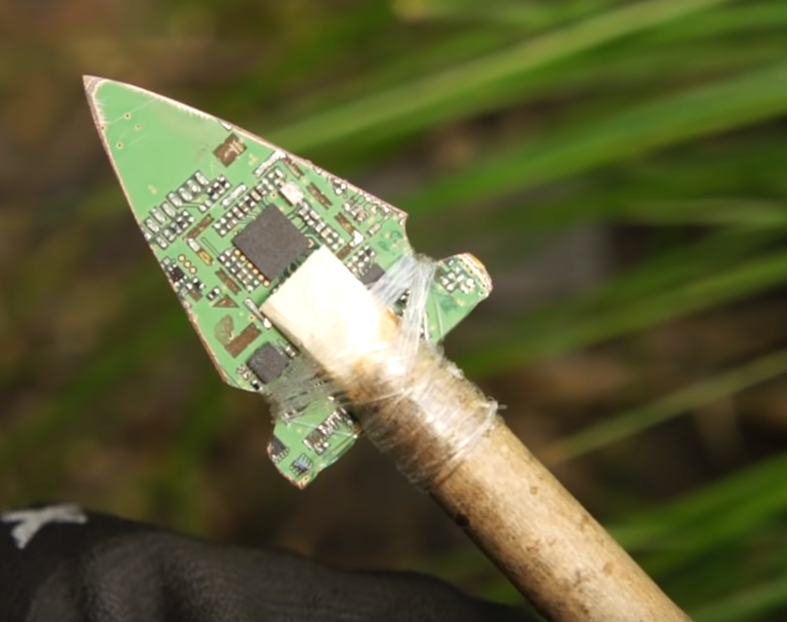n00b question, sorry. If I had a desktop that could hold 4 HD and 2 SSD, could I turn it into a NAS? Could someone point me in the right direction if this makes sense?
Yep. Just install Linux, plug it into your router, set a static ip, and install the nas software ya want.
There are plenty of approaches. ChatGPT is great at debugging issues and helping ya through the setup. I did this with a raspberry pi and external usb drive the other week.
Nice, didn’t realize a NAS could be on smaller hardware. Thanks for the info!
Some people even use Raspberry Pis as their NAS. I use an old MacBook (5th gen i5) as a home server with 2 external hard drives as a NAS, which also runs a few docker containers like Jellyfin. Before that, I was using an old PC with 1st gen i3 for all these things.
yes, try freenas/truenas
It’ll work fine. A NAS is just a PC. Try Unraid if you want a user friendly UI. It costs money but it’s only a one off payment for a lifetime license, and they have a free trial.
+1 for unRAID. I did the same when I got tired of Netflix increasing prices while dropping content. Also got annoyed with my cable because it’s expensive and good content is rare.
Bought a 12th gen i5 desktop on sale and 4 x 10Tb drives and installed unRAID on a USB key.
Easiest thing I’ve done in years and it’s 100x better than Netflix and 1000x better than cable.
Or truenas
You totally can, but since it will be on all day with 4 hdd look into wattages you want to live with. There are some small NUCs or Pi based NAS with low wattages. There is OpenMediaVault, FreeNAS/TrueNAS software to install
Hey sorry, thinking on this more, could I just turn on the NAS when desired? What is the benefit of running it constantly?
Yep, look into Wake On LAN if you just want to power the NAS on remotely.
My NAS also powers on at certaIn times of day and off again after a while - IF - no-one’s connected / no network traffic / etc.
I do NOT need my NAS on at 3am…
Edit : forgot to say, check out OpenMediaVault
Note that there is some reliability drawback of spinning hard disks on and off repeatedly. maybe unintuitively HDDs that spin constantly can live much longer than those that spend 90% of their time spun down.
This might not be relevant if you use only SSDs, and might never affect you, but it should be mentioned.
Stellar! Thanks for the info!
You can also configure the HDDs to power down when they’re not in use. HDDs are the biggest power consumer anyway.
deleted by creator
You could totally turn on as needed, WakeOnLan is good for that. But typically when people run a NAS it is for streaming audio, video, file sync and backups and maybe docker running other services so the NAS is typically on 24/7 so it is available on demand. But it doean’t have to be 100% uptime if you don’t want it to be. For example I have two OpenMediaVaults one on a pi and one an old IomegaNAS. The pi is on always with an attached drive, and serves Samba Shares and DLNA/DAAP shares. Has docker running syncthing, CUPS print server, Trillium Notes, and homeassistant; so makes sense for it to be on all day, especially because my wife’s system backsup to it daily automatically. The converted Iomega NAS is mainly a backup machine sInce it is old and not as performant (only has 100 network speed. So that gets turned on to do a bulk backup and not much else.
Nice, good things to balance. Thanks for the info!
Anything that can can provide storage attached to the network is a potential NAS. It doesn’t take a lot of power to just offer and store files. If you start getting into stuff like live transcoding or heavy encrypt/decrypt that’s a bit different matter.
Absolutely anything can be turned into a NAS, as long as you’re aware of your own needs and the hardware’s capabilities. A NAS is just a computer with some specific requirements.
When I first built my NAS, it only used parts that I got for free. A cheap micro ATX board with only two RAM slots, an i3-4160 CPU, 2x2G RAM, a worn-out SSD, and a 1T HDD. It couldn’t run something like TrueNAS, but it was enough for Proxmox and some Alpine containers running services like Samba, Transmission, Wireguard, and a small Debian VM for me to fuck around with. The single storage disk means there is no redundancy, so I only store replaceable data on it, like TV shows and installers.
There are many hardware-focused channels on video platforms that offer guides for budget home servers. Wolfgang’s Channel is good, and Hardware Haven and Raid Owl just finished a competition of building a sub-$200 home lab.
No reason why not. May be a little power-hungry depending on the spec but if you already have it go for it. FreeNAS (now TrueNAS) is the usually suggested OS to run: https://www.truenas.com/freenas/
Since you have 4 HDD slots probably run 4 disks in a RAID 5 so think of how much space you need. RAID 5 is n-1 so if you have 4x 10TB drives you will be left with 30TB of space before formatting. You can calculate here: https://www.raid-calculator.com/
Then either mirror the SSDs for OS and caching or just use one. Depends on your budget really.
Nice, thanks so much for the info!
Power consumption is the main issue. If it’s an old, power hungry desktop and you live somewhere with expensive electricity, it can be quite costly to run. If you have an energy efficient desktop or have cheap power then it will be fine. Just make sure it has a good quality power supply if it’s going to run 24/7.
Maybe I’m dumb but looking at wikipedia I’m a bit confused. Seems like you can do this on almost any linux distro. What is the reason behind setting up a dedicated OS, cost of operation, stability, performance?
kinda the same reason people suggest something like linux mint over slackware, gentoo, arch, etc… mint is easy to install and is preconfigured to be an easy to use user desktop environment. you can configure any other option to be have like that, but they tend to be a bit more “DIY”, which is great if you know what you’re doing!
dedicated NAS OSes will have good software out of the box that make it easy to configure and manage various common disk-related configurations (RAID, SMB, NFS, etc). you can certainly do all this yourself, but it might not have a pretty, unified user interface, or you might have to deal with software that isn’t compatible with some version of a library that’s in your distro of choice… all resolvable things, but they take time to solve: anywhere from installing a package manually to applying a kernel patch and recompiling the kernel to get something to work
I see, thanks for the info!
Not everybody has the knowledge to deal with Linux. A product line TrueNAS or Unraid has a friendly GUI that can be used by a non-technical user.
Acronyms, initialisms, abbreviations, contractions, and other phrases which expand to something larger, that I’ve seen in this thread:
Fewer Letters More Letters LXC Linux Containers NAS Network-Attached Storage NUC Next Unit of Computing brand of Intel small computers Plex Brand of media server package RAID Redundant Array of Independent Disks for mass storage SATA Serial AT Attachment interface for mass storage SSD Solid State Drive mass storage ZFS Solaris/Linux filesystem focusing on data integrity
[Thread #377 for this sub, first seen 27th Dec 2023, 01:15] [FAQ] [Full list] [Contact] [Source code]
My NAS is just a very old Acer desktop from like 2011. I bought a Fractal Meshify 2 case which can hold I think 14 hard drives and moved the internals into that. Works great.
Eventually I had to get a pcie card for more data ports, and replace the power supply with one that’s more than 300w.
Of course. Just put disks in and set up whatever remote filesystem and it’s a NAS.
Another option is to use openmediavault.
I haven’t looked at truenas.
TrueNAS is very good at being a NAS. I used it for some time but eventually moved to CasaOS because it’s better at being a home server.
I hadn’t heard of CasaOS before; looks very cool. I am currently on TrueNAS and it’s been fine, but I had been running it in a VM because it wasn’t a good fit for running other things along side it. This seems like an interesting solution, thanks!
No problem! I really like it!
My first NAS was an old desktop that I got for $300 running an FX-6300 and a GTX 550, I slapped a couple hard drives in there, installed Ubuntu, and made an SMB share.
I’d recommend installing TrueNAS Scale on a system rather than doing what I did in part due to it being so much better than what I was doing, but you could run it on a potato if you wanted.
Hell my latest NAS upgrade is going from a PowerEdge T610 (tower server from like 2010ish) running TrueNAS Scale to a normal desktop (from 2017) running TrueNAS Scale
If anything using normal desktop hardware makes servicing it easier than using old server hardware
Yes, you can. What do you want to use it for? If its just a NAS you could use TrueNAS but if you want more services I would use proxmox.
If you are wanting tiered storage (ie SSDs as cache) then TrueNAS is probably the right answer as it uses ZFS and is very flexible.
Just a question but do you use proxmox yourself? And if yes, what services would you recommend to run?
I’m not sure I can recommend anything without knowing your goals. For me my needs quickly outgrew my little mini PC and now I have a cluster with a few single board computers. Here’s a basic list of what I run:
Dell workstation (proxmox):
- Linux Mint
- GPU and USB passed though via Virtio with a sata to USB adapter for connecting the bluray drive
- Used as a desktop and is an alternative to my laptop.
- It also hosts Jellyfin in a podman container
- Docker 0
- Nextcloud
- TrueNAS
- This is a TrueNAS VM with a dedicated sata controller passed though to it. Its used for storage for nextcloud and jellyfin.
Mini PC (proxmox)
-
landmass
- this is a simple LXC container to act as a wireguard client with a caddy proxy. It allows me to access my HDhomerun as it is in another building (long story)
-
caddy
- this used to be for accessing my homerun but is now just for remote access via ssh.
-
outside access
- this is a VM that connects to the VM in linode to route traffic. It runs Ngnix proxy manager and is a wireguard client.
-
docker1
- this hosts Matrix and Drupal. Matrix is basiclly unusable for me because as soon as I start joining rooms the resource usage shoots though the roof and it sometimes crashes
-
Linode
- I have a VM in Linode that routes traffic into outside access via wireguard. It also runs Ngnix proxy manager.
-
Friendlywrt
- I have a Nanopi that acts as a firewall and dhcp server to isolate everything.
This is a incomplete list and doesn’t include my firewall rules or other security measures. I also run Debian on all VMs as it is easy to setup and maintain. If you are looking for somewhere to start I would start by installing nextcloud in a docker container. Proxmox will scale the best but if you are just looking to learn I would install Debian and docker compose. TrueNAS is great for a NAS but its designed to be an appliance so it can be limiting.
Great rundown, thanks!
I don’t have a background in software, but I think I’m doing okay with my Raspberry Pi’s so far.
And I’m looking for more challenging stuff, so this was very helpful.
- Linux Mint
This is what I do, using proxmox.
I do something similar to https://youtu.be/Hu3t8pcq8O0 for the NAS bit. Then I have a VM with docker containers for different services
Unraid is a great option for anyone, but beginners in particular. It does, however, cost money and isn’t open source.
Thanks for the resource, might be good to at least research. Thanks!










